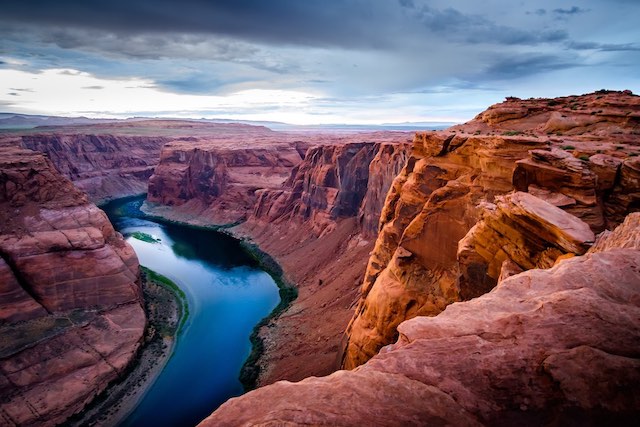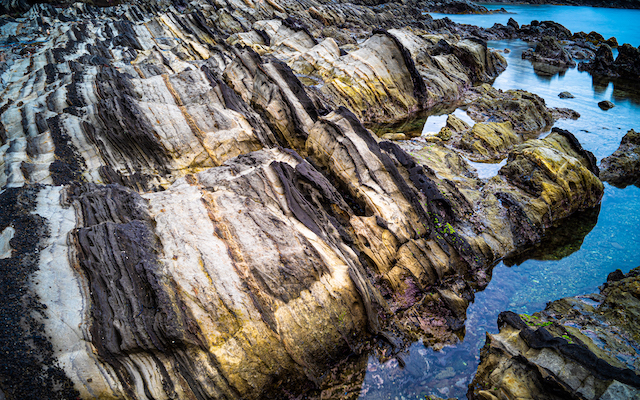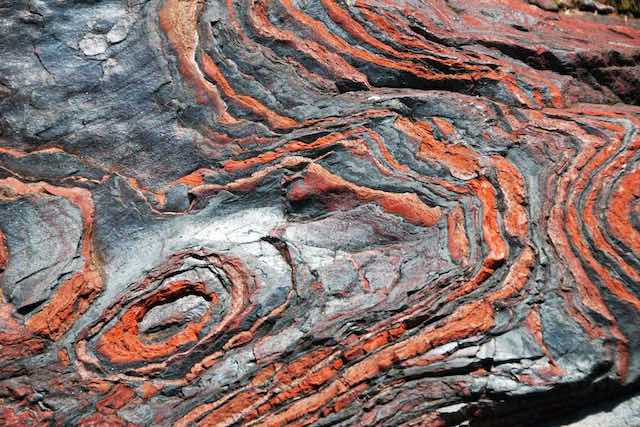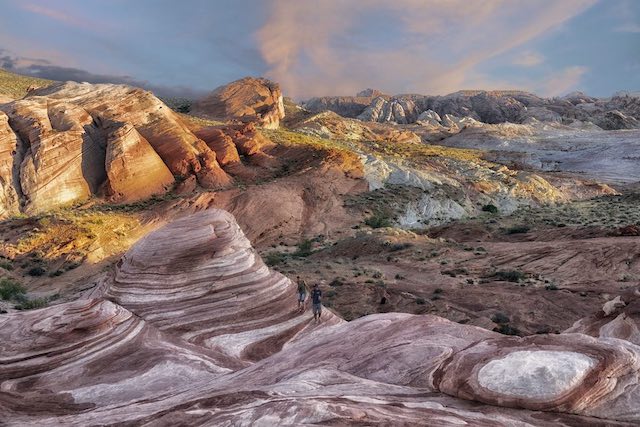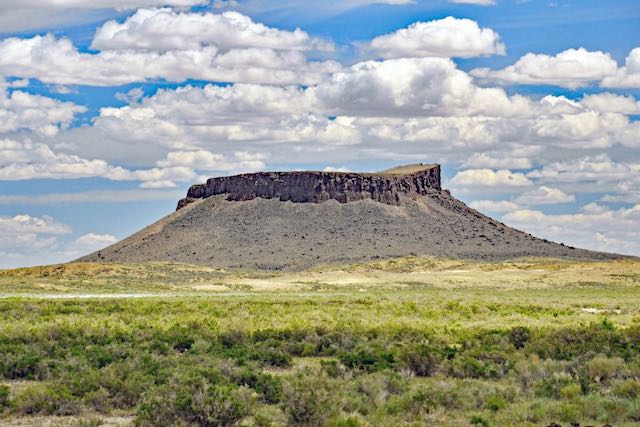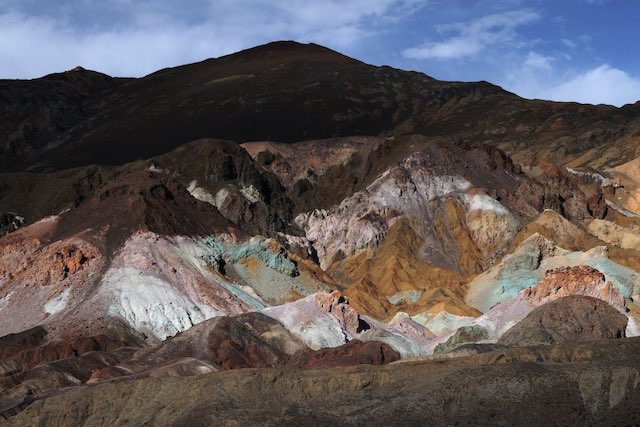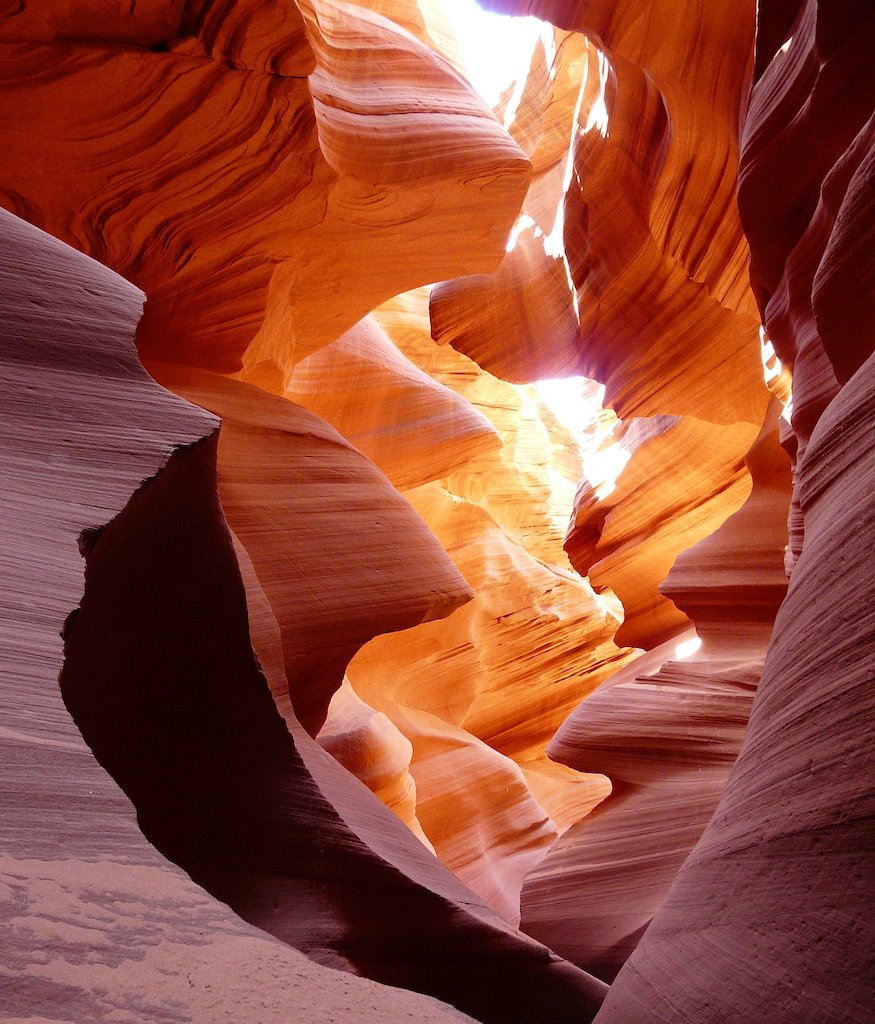
Rock arch with flowing patterns
Smooth and delicate stripes, like swirling streams of water. The Antelope Canyon in northern Arizona, USA is a narrow canyon created by the erosion of sandstone. The shadows of the stripes appear on the rock surface illuminated by the light, and it is a very mysterious scenery.
It is located on the land of the Navajo people, one of the indigenous Indian tribes, and is called “Hasdeztwazi” in the Navajo language. It means “spiral rock arch”.
Narrow canyons like Antelope Canyon are called “slot canyons,” and many other small canyons have been formed in the sandstone formation (called the “Navajo Sandstone Formation”) where Antelope Canyon was formed.
It may be difficult to get an idea of the “canyon” from just the picture at the beginning. This is what the Antelope Canyon looks like from the sky.
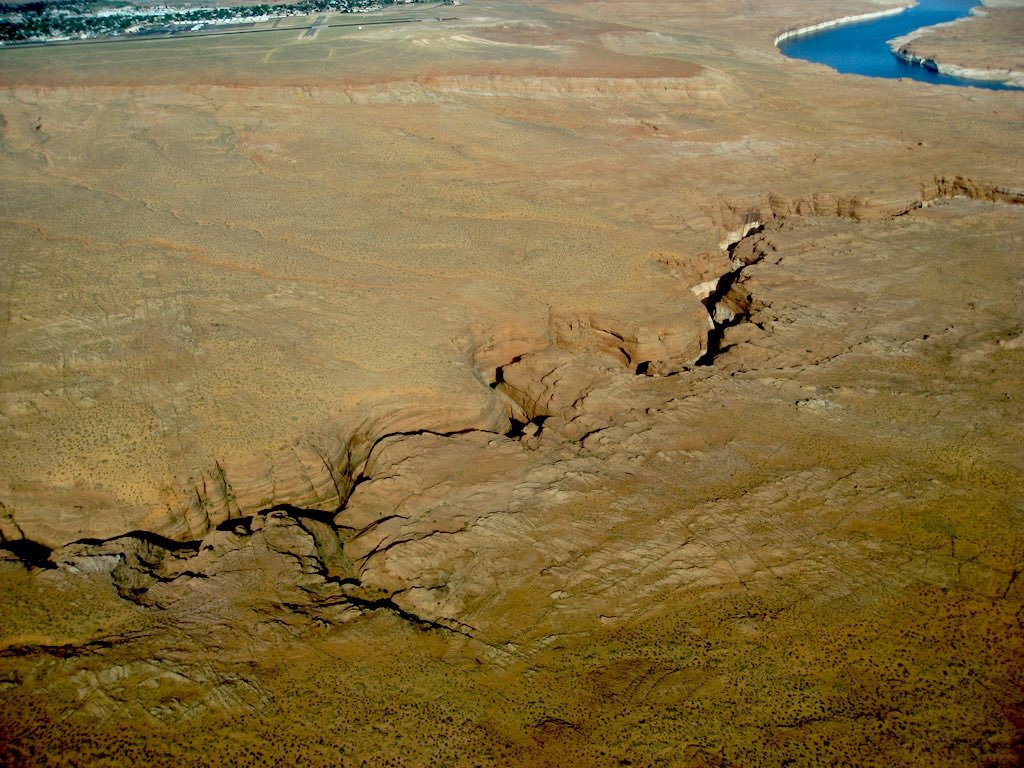
If you look at the whole view from above, you can clearly see that the valley was formed by the flow of the river. If you follow the cliffs of the canyon and go down into the narrow crevice, you will find the mysterious space I mentioned earlier. The canyon is roughly shaped like a “V” and gets narrower as you go to the bottom.
The flash floods gouged and the wind finished smooth
The unique topography of Antelope Canyon is thought to have been created by flash floods flowing into the cracks in the earth and gradually carving them away.
A flash flood is a phenomenon in which a short downpour in the upper reaches of a valley causes water to flow into the lower reaches of the valley at once. And it’s not just water. It is also very dangerous, as stones, mud, and in some cases large rocks and logs flow with the water.
The state of Arizona is basically a dry region, but during the monsoon season from July to September, there are often short periods of torrential rains. When torrential rains occur in the upper reaches of Antelope Canyon, flash floods flow along the valley, gaining momentum in narrow rock crevices and gouging the rocks with violent water flows.
The repeated erosion of the water gradually opened up the canyon passage. The surface of the rock walls lost their corners and became the smooth, gracefully curved shape we see today.
The formation of the Antelope Canyon is also related to the erosive action of the wind. The land is very dry except during the monsoon season, so when the wind blows, sand is blown up and countless sand crushes are blown on the rock walls of Antelope Canyon.
The collision of the sand crushes, or the force of the wind itself, gradually scraped away the walls gouged by the flash floods and made them smoother.
The rock walls of Antelope Canyon are rugged yet smooth with no corners. This is why the canyon is so mysterious with its graceful curves. Flash floods gouged deep into the canyon, and the wind smoothed out the surface.
Note that flash floods still occur today, so be careful.
In August 1997, 11 tourists were killed in a flash flood. At that time, there was no rain in Antelope Canyon, but heavy rains 11 kilometers upstream caused flash floods to flow in without warning.
Dinosaur-era sand dunes turned to rock
Antelope Canyon is a canyon formed in a sandstone formation called the Navajo Sandstone Formation.
Sandstone, as the name implies, is a rock made of sand, but it can be formed by the hardening of sand at the bottom of oceans and lakes, or by the hardening of sand dunes on land. The Navajo Sandstone Formation is the latter type of sandstone, formed by the hardening of sand dunes.
Because the sandstone was soft and easily eroded, many slot canyons were formed in the Navajo Sandstone Formation, as mentioned above. The color of the Navajo Sandstone Formation varies from pale pink to bright orange, which is due to the influence of iron oxide.
The Navajo Sandstone Formation was formed about 180 million years ago, during the dinosaur age called the Jurassic Period. The sand dunes from the dinosaur age have hardened into the strata of Antelope Canyon.
And the thickness of the strata is also noteworthy.
The Navajo Sandstone Formation is so thick that in some places it is over 600 meters thick. This is a tremendous amount of sand, but where on earth did such a large amount of sand come from?
Apparently, the researchers believe that it is the Appalachian Mountains far to the east. They were swept westward by rivers and then carried by the wind to accumulate in the western part of the continental United States, where they became huge sand mountains.
It is said that it took more than 15 million years for the Navajo Sandstone Formation to become this thick.
References
Katsuaki Watanabe (2020) Utsukushisugiru chigaku Jiten (Handbook of the Most Beautiful Geological Wonders), Tokyo: Shuwa System [published in Japanese].
Location
Translated with www.DeepL.com/Translator (free version)

